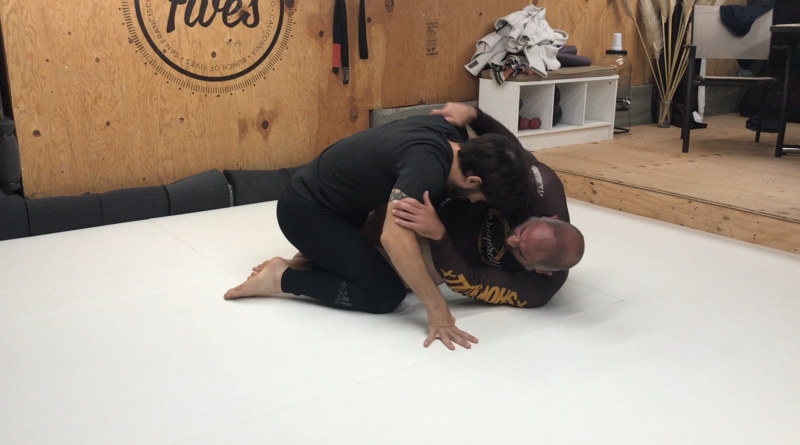Grappling Pods: Jiu Jitsu’s Answer To The Pandemic?
We are in the midst of a deadly pandemic and asked to do two things when around others: Wear masks and social distance. But Jiu Jitsu requires that you do neither. This has led to divisive measures on how to handle training. Consequently, Jiu Jitsu has hit a massive speed bump. Grappling is officially in the ‘Dark Ages’, and this will be the single worst year for the evolution of the sport. Can “Grappling Pods” change that?
As they say: ‘Necessity is the mother of invention.’ Thanks to the invention of the grappling pod, more people are on the mats. Training in a small group, with the same trusted partners, you can minimize the risk of contracting Covid-19. How small of a group are we talking about? Stephan Kesting (who has written and talked about this in great detail) believes more than three people becomes too much risk. While this seems practical, is it really the best solution for training in 2020?
Three Types Of Grapplers
Let’s take a look at three approaches to training during the quarantine. First, there are grapplers chalking this year up as a loss. They are not taking any risks by training. Instead, they’re treating it the same as an ACL tear. You sit out a year and come back when you’re healed. Their mindset is ‘setbacks are part of Jiu Jitsu and you have to be OK with that.’ That’s sort-of how I factor in parking tickets to my budget living in San Francisco.
On the other end, you have grapplers who are not concerned about Covid. They have decided to continue training like normal. These savages meet regularly with other like-minded people and grapple like they did before the coronavirus. They don’t mind taking these risks because in their opinion, the benefits of training with various partners overshadows the risk of the virus.
Then, in the middle of these two, you have the cautious grappler. This is the person who has decided to keep training while limiting exposure to others. They take great strides to insure their risk of infection is low. They’ve purchased mats to use at home or are training in a grappling pod at the gym during off hours. This is the category I fall into.
The Beginnings Of The Grappling Pod
In the beginning of the pandemic, people like me were content to take a little time off. We watched videos and stayed in shape. But as the weeks moved along, we started to lose it. We grappled chairs, attacked brooms and choked the hell out of grappling dummies. But this didn’t work for long.
Eventually, I broke down and bought some Zebra mats just like we have at my gym. It set me back $1,500, but was well worth having a “safe space” of my own. I invited a couple of friends over who I trust and we began training. It felt amazing to grapple again. The balance in my life was restored. After a few weeks, my technique was back to normal. My grappling pod was working. However, after that, my progression slowed greatly. It was hard to perfect new moves. With a limited number of partners, I couldn’t test myself like before the pandemic. To really evolve was slow going.
One day, a text came through from Gilbert Melendez: “We’re giving Balu his black belt tomorrow at noon.” I couldn’t miss my friend receiving his black belt, so I showed up early and watched them train. This was an eye-opening experience. Before the lockdown, I was on par with these guys. In fact, Melendez and I had matches scheduled for Submission Underground and were training together. But that day, seeing their scrambles, attacks and escapes, I realized there was a clear gap between us. They were on a different level than me. The moves they were using looked fresh and inventive while mine felt simply, adequate. It struck me that these guys were evolving in a world that is stagnant. I realized then that they will rule the mats for a while.
Do Grappling Pods Work?
The answer to the question ‘do grappling pods work?’ Is yes AND no. They work in the sense that they’ll give you all the mental and physical benefits that come from Jiu Jitsu. You’ll also maintain a certain skill level, so that when things are back to normal, you don’t have as much catching up to do. And you get all of this while minimizing your risk. For the cautious grappler, it’s the answer for Jiu Jitsu during the pandemic.
But for the competitor, it is not enough. It’s less than ideal training that will yield less than ideal results. You can’t expect to evolve like those who have been training non-stop. With multiple partners and more options to train, these grapplers are advancing at a pace that others simply can’t keep up with. These savages are the ones who will win competitions ahead. Like it or not, it’s just the way it is. And unfortunately, this time, I’m not one of those. But it’s OK. Jiu Jitsu is a lifelong pursuit. Sometimes ‘life happens,’ and you do the best you can. While my grappling pod is bigger than recommended, it fits my risk tolerance. And hey, at least I’m rolling.

